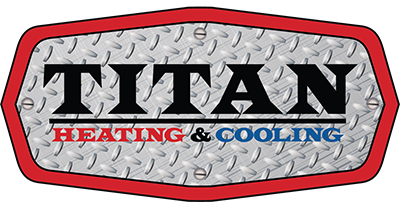
How To Keep Your Garage Warm This Winter
As the chill of September creeps in, Minnesotans know that the frigid winter months aren’t far behind. And though, with the cold months, we must wave goodbye to summer’s outdoor-hobbies, mechanics and DIYer’s still have the option to enjoy their pastimes comfortably in their garage. If the garage is heated, that is.
This month, we’re taking a break from talking about HVAC maintenance, and helping with tips and recommendations to keep your garage warm this winter. There are two major components of making your garage a livable temperature: insulation and an efficient heating system.
Seal and Insulate
Before we even think about heating the garage, it needs to be properly insulated. If it’s not insulated, any heat that gets pumped into the garage will quickly diffuse through the walls, windows, and the garage door.
- Walls: Most garage walls are just studs that are covered on the outside with sheathing and siding. That means they aren’t insulated like the rest of your home. This makes heating and cooling the area much harder. Luckily, insulating garage walls is a fairly easy task: layer batt insulation between the studs and install plywood sheets or drywall panels to cover them.
- Windows: If your garage has windows, they’re more than likely letting in some kind of draft. To mitigate this, you can air seal your windows by applying weather stripping and caulk. (Check out our other blog about how to air seal your home for more details on how to do this.) You’ll also want to insulate your windows using a window insulation kit. Simply apply the film to your window and use a hair dryer to shrink it until it fits snugly to the glass. The film will help keep the warm air in and the cold air out.
- Floors: There’s nothing worse than a freezing-cold garage floor. If you’re planning on working low to the ground (looking at you, mechanics), you’ll definitely want to invest in some kind of garage floor-covering. Even if you’re not planning on being close to the ground, covering your garage floor will instantly make the room feel warmer. Outdoor rugs work well for this, or you could install interlocking rubber mats for extra padding.
- Door: You’d be hard-pressed to keep your garage warm without fixing up the garage door. Not only are standard garage doors thin and uninsulated, but they also have many gaps on the sides where the door meets the frame. Apply weather stripping to the garage door frame to seal up any gaps. As for insulation, invest in a garage door insulation kit. These kits make it easy to install pre-cut panels of insulation.
Choose Your Heat Source
Now that we’ve covered how to keep warm air contained in your garage, we can finally talk about choosing a heating system. There are a multitude of products available that will keep your garage warm, but finding the heating system that’s right for you will depend on your budget, the size of your garage, and the garage’s purpose.
Portable Space Heaters
Space heaters are small, portable heaters that generate warmth via electricity, propane, kerosene, or natural gas. Space heaters such as baseboard heaters and ceiling-mounted space heaters are great options for keeping your garage warm.
There are some downsides of space heaters: first of all, they can pose a fire hazard if handled incorrectly. Second, if they operate off of electricity, they can run up your heating bill quite a bit. So you’ll have to be mindful of when you turn them on and how long you run them.
Hot Dawg® Garage Heater
If you’re looking for a heating solution with versatile installation options, the ceiling-mounted Hot Dawg® Garage Heater frees up more workspace by getting rid of space heaters that clutter up the area. It’s also much quieter than most space heaters, allowing you to focus comfortably in your workshop or garage.
The Hot Dawg® Garage Heater runs on propane or natural gas, and is available in 6 different sizes. Its versatility makes it a great choice for any garage workspace.
Radiant Heater
Different from forced-air heating, radiant heaters use infrared energy to emit heat. Much like the sun, instead of blowing hot air, they “radiate” warmth. Radiant heaters can be powered by a heating element, an infrared lamp, or flames, and can be installed on either the wall or ceiling.
Of course, there are radiant-heated floor lamps, but much like portable space heaters, they can pose a fire hazard.
Ductless Mini-Split System
A ductless mini-split system is efficient and easy to install. It has both heating and cooling capabilities and consists of two major components–the indoor air handling unit, and the outdoor compressor.
In the colder months, the outdoor unit extracts heat from the air outside and releases it indoors via the air handler. A ductless mini-split unit can be installed directly into your garage wall without ductwork.
Need HVAC Maintenance Services To Prepare For Winter? Call Titan Heating and Cooling Today!
At Titan Heating and Cooling, we can take care of all your heating and cooling needs. While keeping your garage warm during the winter can be a fun project, keeping your home warm and comfortable is a necessity–make sure your HVAC unit is prepared before winter hits! Contact us to get on our HVAC maintenance schedule today!


